Displaced, confined, lost, bored, lonely.
Today’s student-athletes have felt the pressures and emotional loss of the seasons that were postponed or canceled because of COVID-19. When students were sent home in March 2020, the women’s basketball team had completed its season with its first NCAA tournament appearance. The softball team had just returned from a week-long spring break tournament in Clermont, Fla., and track and field athletes were preparing to head to an invitational meet in Murray, Ky. All of that came screeching to a halt with the announcement that this new virus would close Berea’s campus. No in-person instruction meant no participation in sports.
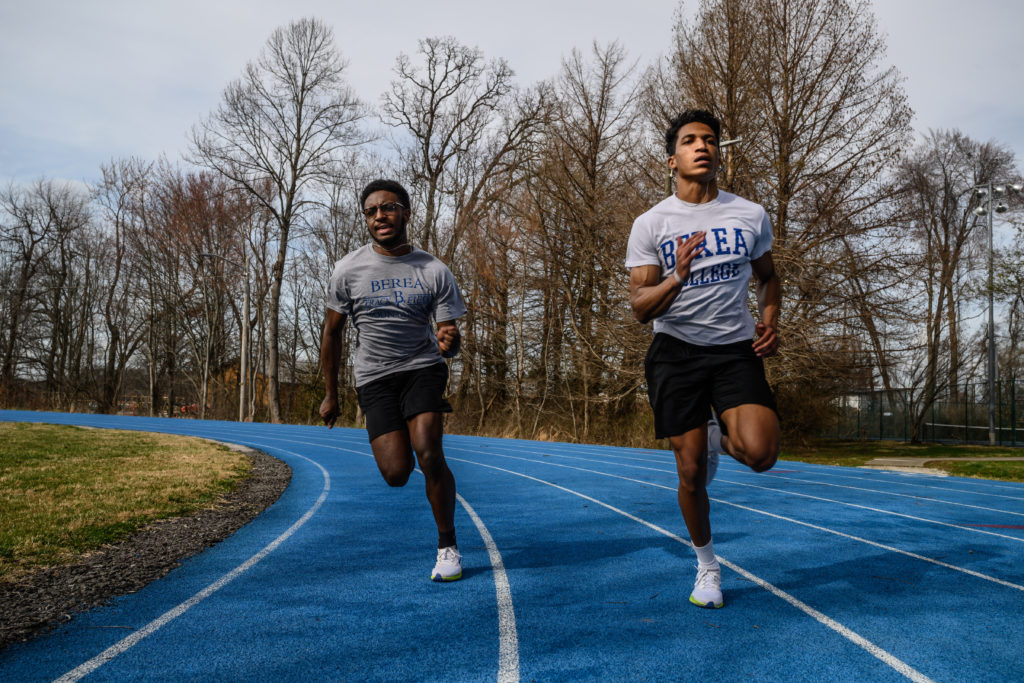
“I was in shock,” recalled Immanuel ’23, a sophomore track and field athlete. “Berea was one of the first to make that decision, and I didn’t understand what was happening. People reached out to me, and I reached out to friends, but I didn’t know what to make of it. I was hurt and wanted to stay on campus and run.”
Immanuel was one of dozens of student-athletes to feel let down by the abrupt cessation of their spring athletic seasons. However, like most of the country, these athletes thought they might have to go home for a little while, but then hopefully return quickly, and by the time their next season came around everything would be back to normal.
“Coaches definitely kept in contact through the spring and summer,” Immanuel said. “They called once a month to check up on us. They texted us, and we [athletes] would text each other. We kept each other accountable to do workouts.”
Now more than a year after that March 2020 announcement, Berea’s student-athletes and coaches have done their best to navigate the uncertainties and challenges that plagued collegiate sports through the 2020-21 season. Decision time
During the summer, it became obvious the College would not operate as usual in Fall 2020. All upper-class students were given the option to return to campus, study remotely or take a leave of absence. First-year students could either reside on campus or defer their acceptance.
Coming to campus came with strict rules to keep the entire community safe from transmission of the COVID-19 virus, including not being able to leave Berea during the entire semester. That meant 14 weeks without going home to visit family, without leaving campus for entertainment and without normal access to campus events that connect students.
As complicated as this decision was for all students, student-athletes had another layer to their decision to return to campus or not. Participation in sports is such an integral part of an athlete’s experience. Not returning to campus meant they could not participate in athletic competition, but there were no certainties that fall and winter sports would have competitive seasons as colleges and conferences across the country awaited decisions about what athletics would look like going into Fall 2020.
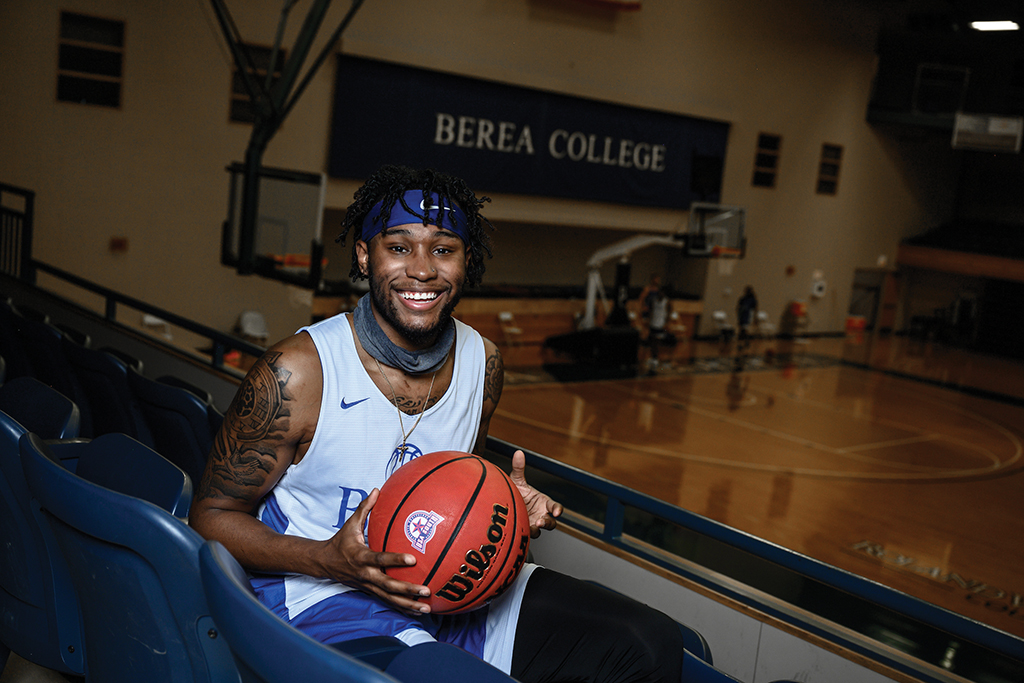
For some athletes, like senior men’s basketball player, Terique, their decision mainly hinged on whether they would get to play.
“There was talk of playing a normal season,” Terique recalled. “I thought, ‘If I can play basketball, I don’t mind coming back and not being able to leave.’ Plus, I learn better in person, so coming back and having in-person classes was important. But I’m only from Richmond [Ky.], so not being able to go home is a big challenge for me because I grew up around family. I knew I’d miss my mom, miss home and miss going out and being with friends.”
Students had to make the decision to return by July 10, before they knew for certain what sports seasons would look like, but the College offered the flexibility of switching to remote learning after the deadline. Just weeks before returning to campus, the USA South Conference announced that all fall sports seasons and championships were being moved to spring.
Ultimately, Terique, Immanuel and about 40 percent of Berea’s student-athletes came to campus in the fall with the hope of practicing with their teams. The other 60 percent chose to study remotely or take a leave of absence. Both choices came with their own set of rewards and challenges.
I learn better in person, so coming back and having in-person classes was important. But…not being able to go home is a big challenge for me because I grew up around family. I knew I’d miss my mom, miss home and miss going out and being with friends.
Terique ‘21
Student-athletes who returned to campus submitted negative COVID-19 test results upon arrival and submitted to additional testing within a week of being on campus. They had scheduled meal times and couldn’t eat in groups. Some had all online classes despite being on campus. As they awaited clearance to begin practicing with their respective teams, feelings of isolation set in. For many teams, it took weeks before they were allowed to begin practicing together.
“I probably wouldn’t have come back if I had known that would be the case,” said Callie ’23, a volleyball player. “But our coaches said we’d have practice and be able to have scrimmages. Then once we were on campus the timeline was pushed back more and more. It was pretty frustrating. I know the school wasn’t to blame and the conference was not to blame, it was because of the virus, but we didn’t know when we could meet in the gym.”
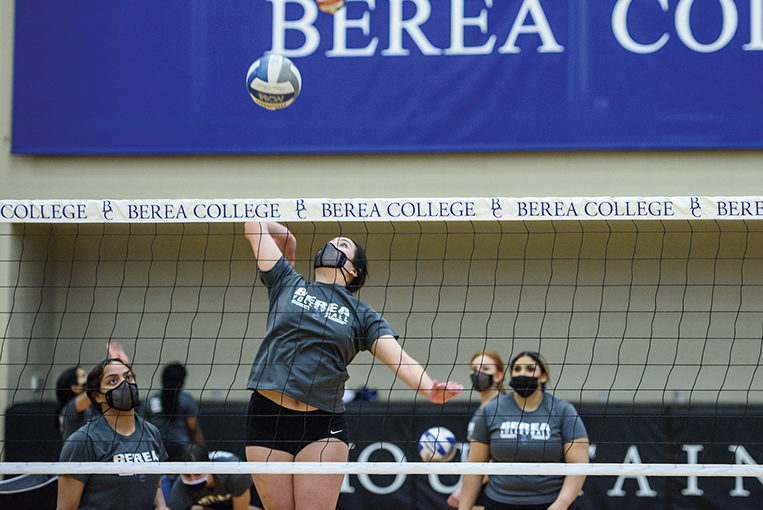
The volleyball team played on a sand volleyball court outside of one of the residence halls to get in some playing time, get to know each other and try to begin growing as a team, Callie recalled.
First-year track athlete Caleb ’24 worked through similar stresses at the beginning of the semester. “Once I got to campus, it took a minute to begin practicing,” he said. “So it was a patience thing. We had to wait and see how things panned out. That process of coming in as a college student was a little bit of a struggle. I came in anxious and excited and then was told to wait a little bit. It became easier to be relaxed and not workout as much.”
Caleb said he would go down to the track to work out on his own, but it felt weird being there alone.
“Once we were allowed to practice, everyone came in ready to work,” he said. “The workouts weren’t hard, but my body wasn’t in shape anymore, and I had to push myself to keep going. But then once I got with the team, those workouts were easier because I had other people around. It was a struggle, but it was OK because we were all in it together.”
Being in it together was key for many of the athletes who returned in the fall. They had to wear masks through most of practice, have their temperatures taken, answer a series of questions before being allowed to participate each day, and spend additional time making sure all equipment used was properly sanitized. But having that in-person interaction made their overall school experience better.
“Juniors and seniors stepped in and helped mentor—they took me and everyone under their wing and that was a big part of making practice successful,” Caleb said. “I was new and nervous, but having that leadership on the track was great. And off the track, they were the same energetic, goofy, fun people.”
Staying home
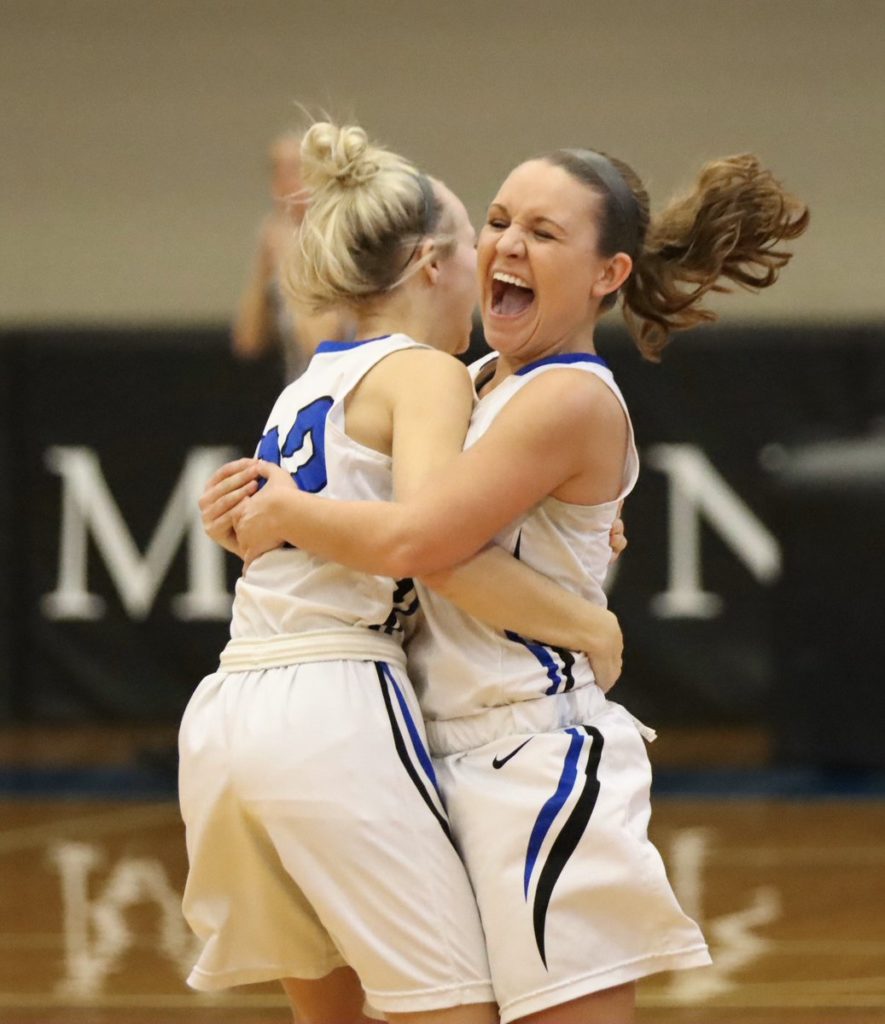
Still, many student-athletes, like Bailee ’22, made the difficult decision to stay home. Bailee, a dual athlete in women’s soccer and basketball from Richmond, Ky., ultimately decided to study remotely because of the College’s strict policies about leaving campus and not having visitors. Proximity to family and having them attend games and then getting to spend time with them afterward was part of Bailee’s attraction to attending Berea.
“The whole reason to go back would have been for sports,” she said. “I didn’t want to miss a season of playing, but when policies came out and I realized I wouldn’t be able to spend any time with family—that was the big deciding factor.”
After a year of being off campus and not participating in the sports she loves, Bailee has faced other struggles. “It has been a lot harder than I expected,” she confessed. “When I was really busy all the time before—I usually went from soccer season to basketball season, and then a few weeks after basketball, I’d start spring soccer. That’s how it’s been all my life. This is the longest off-season I’ve ever had.
“It feels like something is missing,” she continued. “When we’re in season, it is go, go, go, and I wish for a break, but now with such a big break, I wish I could play. It’s like an identity crisis—when for so long sports is all you’ve done and what you like to do or who you are—now I’m not a soccer player or a basketball player.”
Like many athletes, Bailee lacked motivation to continue training while at home. Not only was her rigorous schedule altered, COVID-19 restrictions kept many local gyms closed, so finding places to work out or practice was difficult. In addition, Bailee has dealt with the difficulties of separation from her teammates. The women’s soccer team had a group chat where athletes kept in contact. On-campus athletes would send messages about practices or scrimmages, Bailee recalled, and she would feel disconnected, knowing what was going on but not being able to participate.
“My closest friends are my teammates,” she said. “These friends are the support system I’ve relied on for three years—and it’s just not the same on Zoom.”
“My closest friends are my teammates,” she said. “These friends are the support system I’ve relied on for three years—and it’s just not the same on Zoom.”
Bailee ’22
However, consistent Zoom meetings hosted by coaches were the primary method nearly every team used to keep its athletes connected. These meetings allowed coaches to pass along updates and encourage their players. They also built recognition and camaraderie among on- and off-campus athletes, especially first-year student-athletes who had never met or played with off-campus upper-class students.
“Coach (Chris) Lewis did a great job of that,” said sophomore baseball player Peyton. “Every Monday we would have a Zoom call with all athletes on and off campus, since we had not all met each other. Then Coach (Nathan) Finn started Finny Fridays where he’d talk about team chemistry and what it means to be a leader. I only saw him once in-person in the fall, but I saw him each week on Zoom.”
Peyton was one of only four baseball players on campus in Fall 2020. Despite having a good experience with his team and coaches, he chose to study remotely in Spring 2021, and ultimately Berea’s baseball and softball teams chose not to compete in the Spring 2021 season.
Back in action
Though some student-athletes returned home for the spring semester and some remained home, 52 percent returned to participate in winter, spring and postponed fall sports. These athletes’ return marked a resurgence in hope that athletic life would be normal—albeit a new normal—with athletic events, team travel and long-awaited competition. The men’s basketball team was the first to arrive on campus after the extended winter break that began days before Thanksgiving. Despite the challenges of returning nearly a month before any other students and a positive COVID-19 test forcing the team to quarantine for 10 days shortly after their arrival, the team was hungry for competition. When the team hit the road for its first game on Jan. 23, it had been 322 days since Berea had participated in an intercollegiate athletic contest.
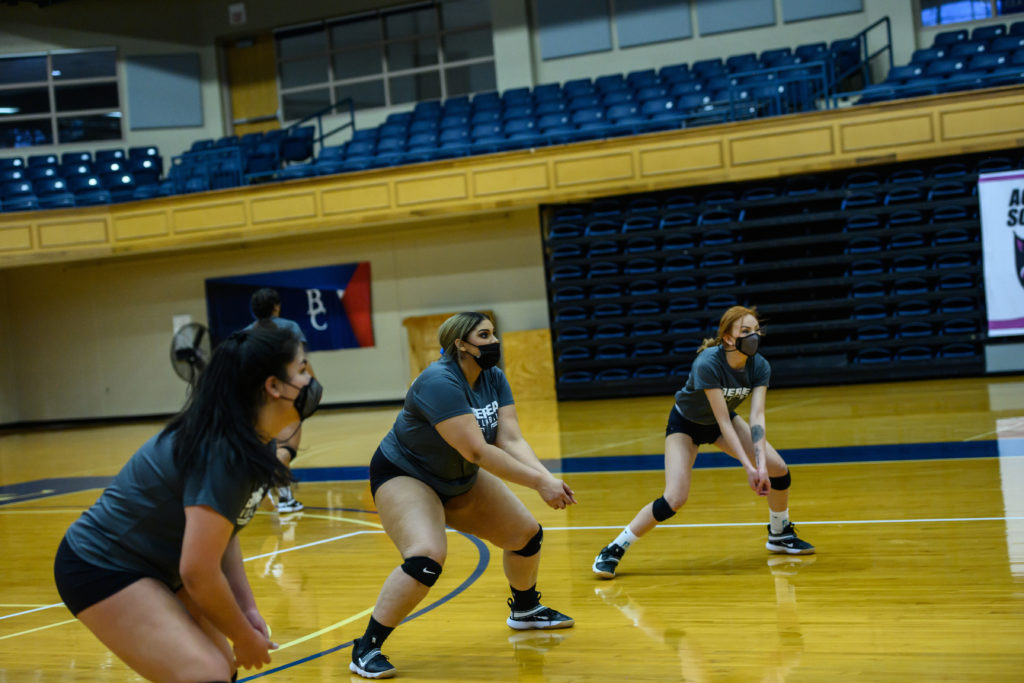
The women’s volleyball season was moved from fall 2020 to spring 2021 due to COVID-19 restrictions on play. Berea had 14 members of its volleyball return to campus to play. 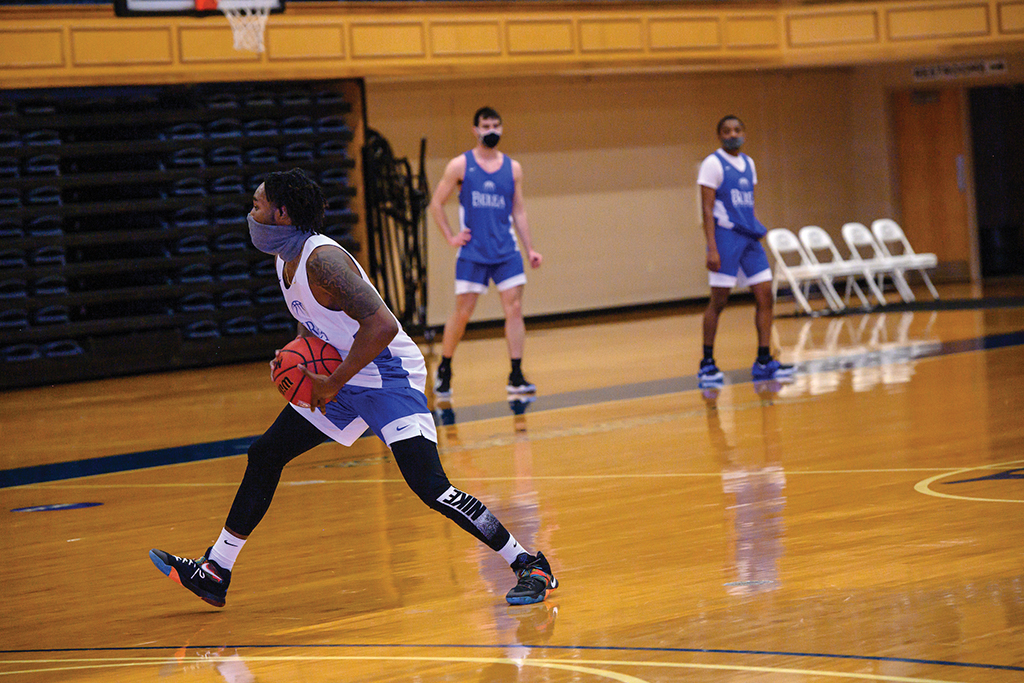
Terique ’21 looks to pass a ball to a teammate during basketball practice in January 2021. 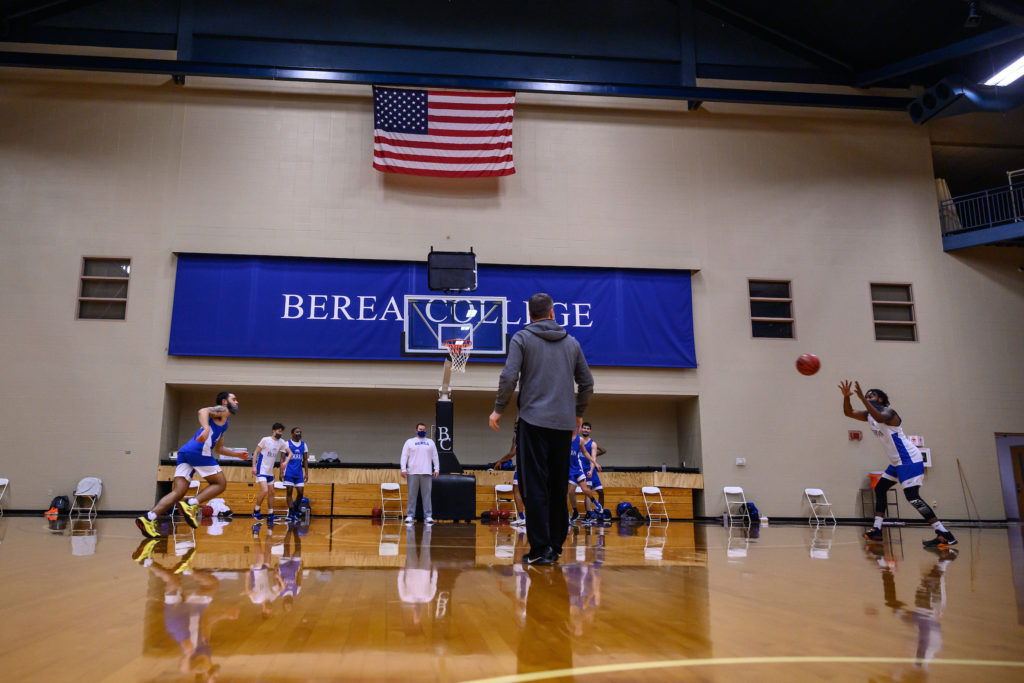
The men’s basketball team practiced together for the first time in January 2021, after being quarantined for 10 days. 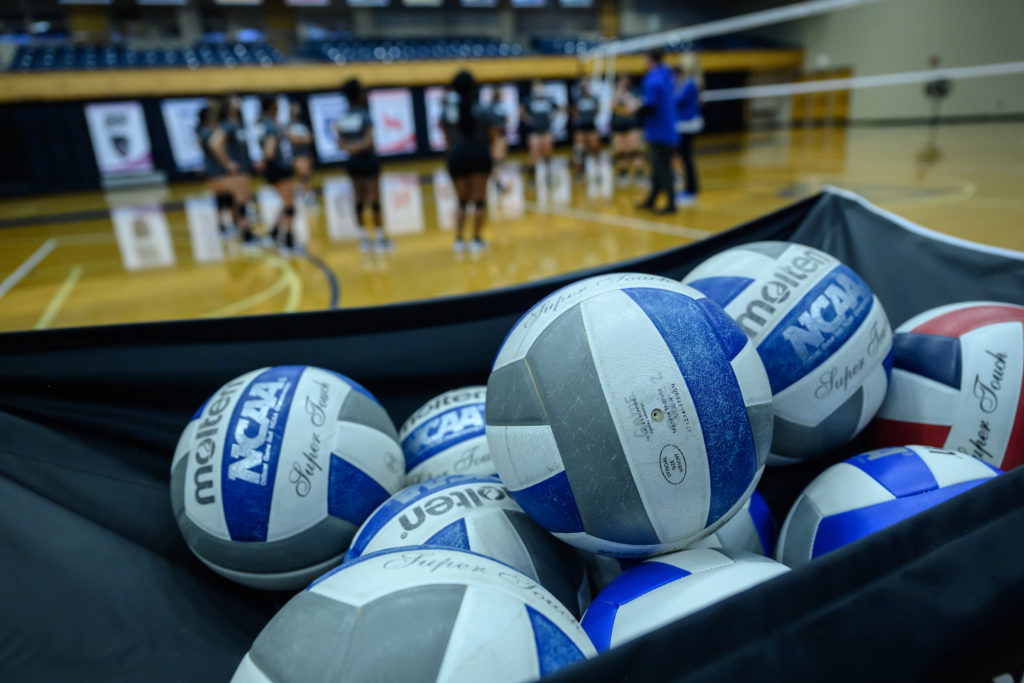

Women’s volleyball practiced during the fall 2020 semester in preparation for its postponed spring 2021 playing season. 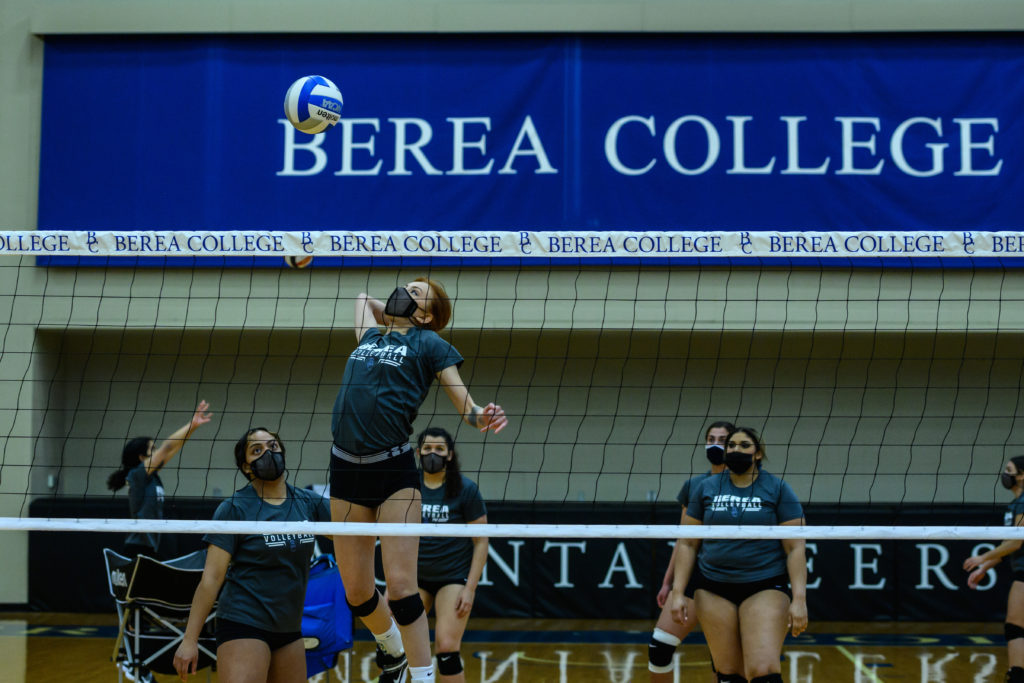
Members of the women’s volleyball team were required to wear masks during practice and play during the 2020-21 season. 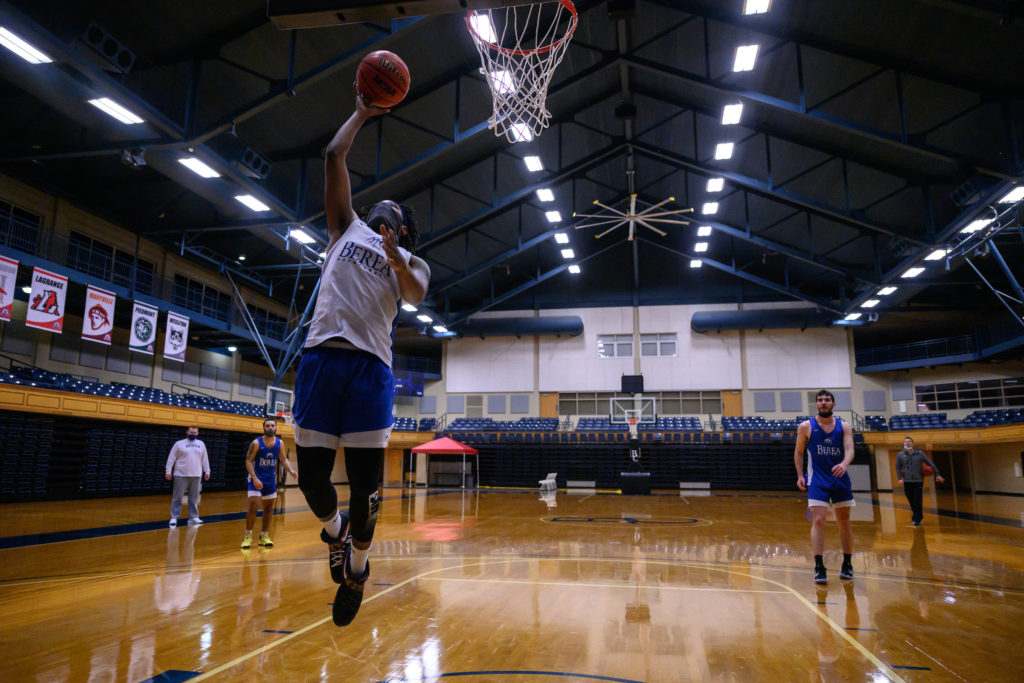
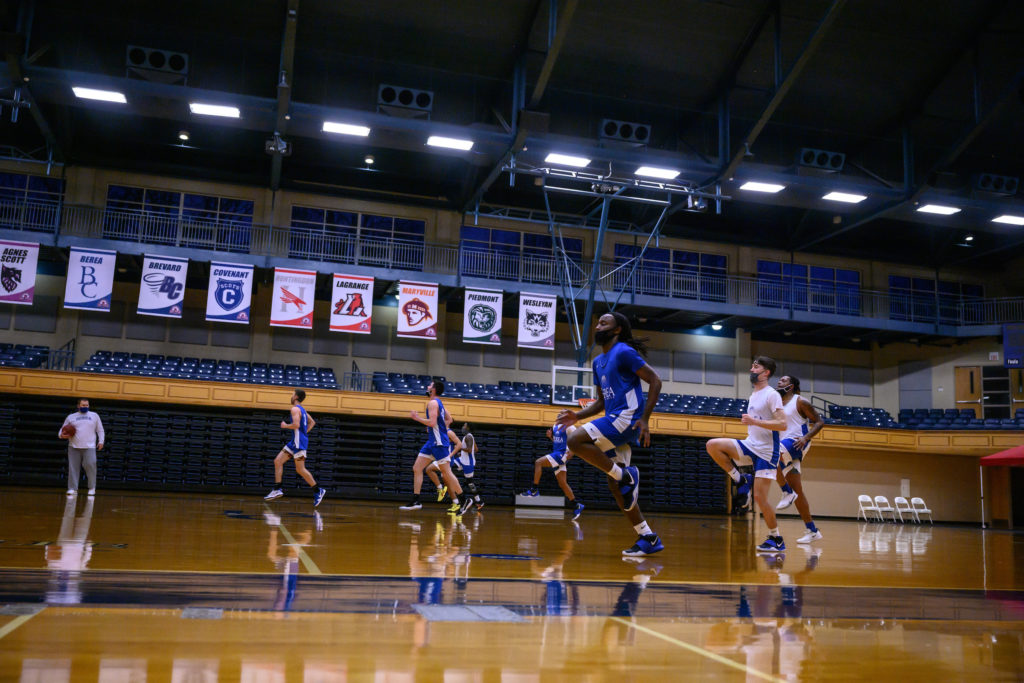
Members of the men’s basketball team wore masks and maintained social distancing while warming up for practices. 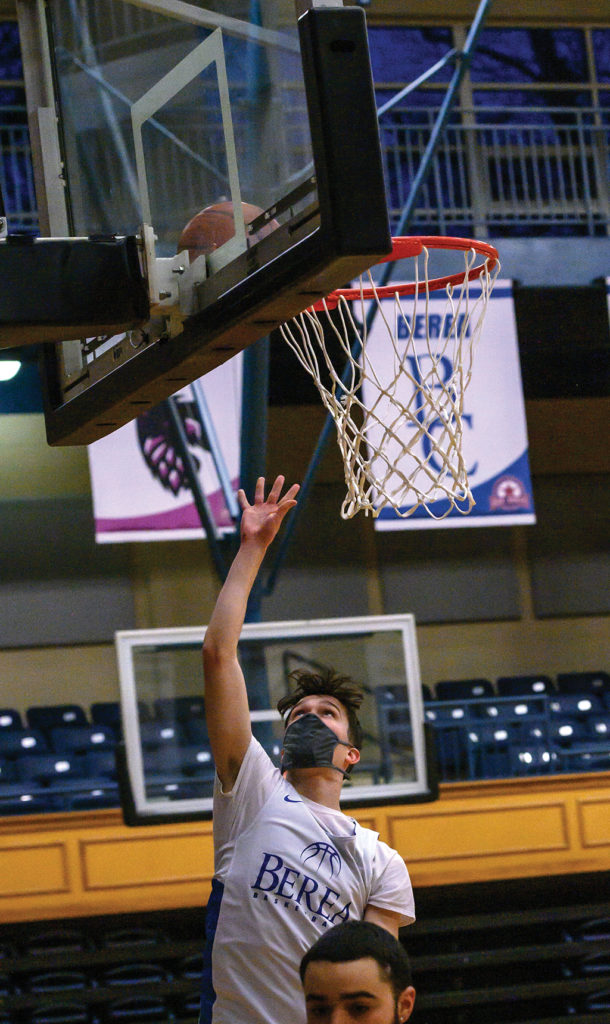
Aaron ’24, a first-year guard from Georgetown, Ky., goes for a layup during practice. He and the other seven members of the basketball team returned to campus in early January to prepare for a shortened competition season. Photo by Crystal Wylie ’05
“Just having a season means the College has tried to give us the best they could,” Terique said about the launch of the basketball season. “Getting the experience to play my senior year—and we may not play for a championship—but to go out and get a win and have fun will mean a lot to me.”
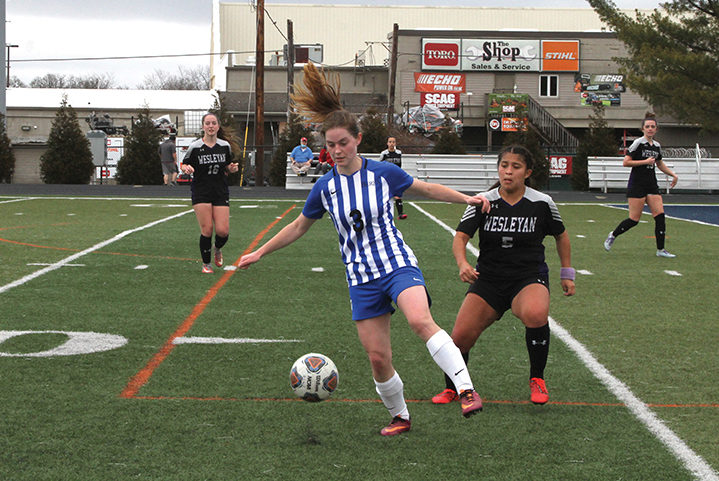
Though indoor-sport athletes played to empty arenas and outdoor sports had restricted spectator rules, sports programs resumed play. Teams maintained stringent testing protocols, testing before every game, multiple times per week. By the end of the season, the men’s basketball players had been tested 25 times in two months. Taking these and other travel challenges in stride, each team made the most of the opportunity to finally compete again.
“Personally, I want to be able to see how I react and perform at the college level coming out of a pandemic,” Caleb said about beginning the spring track season. “I’m a very competitive person, so to take a break from anything, especially running, hurt—it really did hurt. So to see how I can perform at a level I haven’t been at is what I’m most excited to experience.”
This same excitement and hope for the future of Berea’s athletic programs is shared by those looking even further ahead to returning to play in Fall 2021.
“I’m most looking forward to getting back into an environment with people who know me and I’m friends with—and coaches and staff, too,” Bailee said. “I want to be around people I can have a conversation with and be on the field with and go to class in person—I even miss going to class. Being home and lying in bed sounds nice, but it’s only nice for so long. I just want to get the Berea environment back and all the things COVID-19 ripped away from everyone.”

